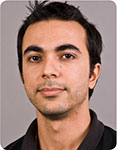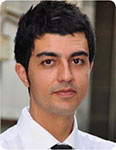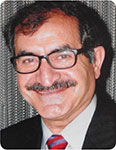Optimisation and economical evaluation of infill drilling in CSG reservoirs using a multi-objective genetic algorithm
Alireza Salmachi A B , Mohammad Sayyafzadeh A B and Manouchehr Haghighi A BA Australian School of Petroleum
B The University of Adelaide
The APPEA Journal 53(1) 381-390 https://doi.org/10.1071/AJ12034
Published: 2013
Abstract
Water production in the early life of Coal Seam Gas (CSG) recovery makes these reservoirs different from conventional gas reservoirs. Normally, a large amount of water is produced during the early production period, while the gas-rate is negligible. It is essential to drill infill wells in optimum locations to reduce the water production and increase the gas recovery. To optimise infill locations in a CSG reservoir, an integrated framework is developed to couple the reservoir flow simulator (ECLIPSE) and the genetic algorithm (GA) optimisation toolbox of (MATLAB). In this study, the desired objective function is the NPV of the infill drilling. To obtain the economics of the infill drilling project, the objective function is split into two objectives. The first objective is the gas income; the second objective is the cost associated with water production. The optimisation problem is then solved using the multi-objective solver.
The economics of the infill drilling program is investigated for a case study constructed based on the available data from the Tiffany unit in San Juan basin when gas price and water treatment cost are variable. Best obtained optimal locations of 20 new wells in the reservoir are attained using this optimisation framework to maximise the profit of this project. The results indicate that when the gas price is less than $2/Mscf, the infill plan, regardless of the cost of water treatment, is not economical and drilling additional wells cannot be economically justified. When the cost of water treatment and disposal increases from $0.01/STB to $4/STB, the optimisation framework intelligently distributes the infill wells across the reservoir in a way that the total water production of infill wells is reduced by 26%. Simulation results also indicate that when water treatment is an expensive operation, lower water production is attained by placing the infill wells in depleted sections of the coal bed, close to the existing wells. When water treatment cost is low, however, infill wells are freely allocated in virgin sections of the coal bed, where both coal gas content and reservoir pressure are high.

Alireza Salmachi is a lecturer at the Australian School of Petroleum at the University of Adelaide. Alireza was awarded a Master’s degree of well engineering from Curtin University of Technology in 2008. In early 2010, he was awarded an international PhD scholarship from the University of Adelaide. He has developed thermally enhanced gas recovery from coal bed methane reservoirs during his PhD study. His research interests are unconventional gas resources (with particular focus on coal bed methane reservoirs), infill drilling optimisation, and well design. Alireza has worked as a research and teaching assistant in Curtin University and Adelaide University. Member: SPE, AAPG, and PESA. alireza.salmachi@adelaide.edu.au |

Mohammad Sayyafzadeh is a final-year PhD candidate in petroleum engineering at The University of Adelaide. He studied chemical engineering at Tehran Polytechnic for his first academic degree, and graduated in 2007 in the top ten percentile. Mohammad continued his studies for a postgraduate degree in reservoir engineering at Tehran Polytechnic, and finished his master’s degree in 2010. At the same time, Mohammad worked as a reservoir engineer in the reservoir simulation and modelling research group of the University of Tehran; they successfully managed to get two significant research grants. In 2010, Mohammad received a full scholarship from The University of Adelaide and Santos for his PhD, to develop new techniques for reservoir modelling and history matching. Mohammad has published several journal and conference papers in different topics, including reservoir performance forecasting, history matching, production optimisation, and infill drilling. His research interests are reservoir modelling and simulation, geostatistics, Bayesian frameworks, uncertainty analysis, production optimisation, and inverse problem theory. Mohammad.Sayyafzadeh@adelaide.edu.au |

Dr Manouchehr Haghighi is a senior lecturer at the University of Adelaide’s Australian School of Petroleum. Manouchehr and his team are heavily involved in different research projects on both conventional and uncon- ventional reservoirs. Before joining the University of Adelaide in 2009, Manouchehr was an associate professor of petroleum engineering at the University of Tehran, Iran. During 2000–2009, Manouchehr supervised more than 40 MSc and PhD students. From 1996–2000 Manouchehr was working with the National Iranian Oil Company (NIOC), and was the director of a program for training NIOC staff at several universities in the US, UK, Canada, France, and Norway. Manouchehr was a visiting professor at the University of Calgary from 2007–2008. Manouchehr has published numerous articles in peer-review journals and presented many papers at international conferences. He has also served as a reviewer for several journals and is a member of SPE. manoucher.haghighi@adelaide.edu.au |


